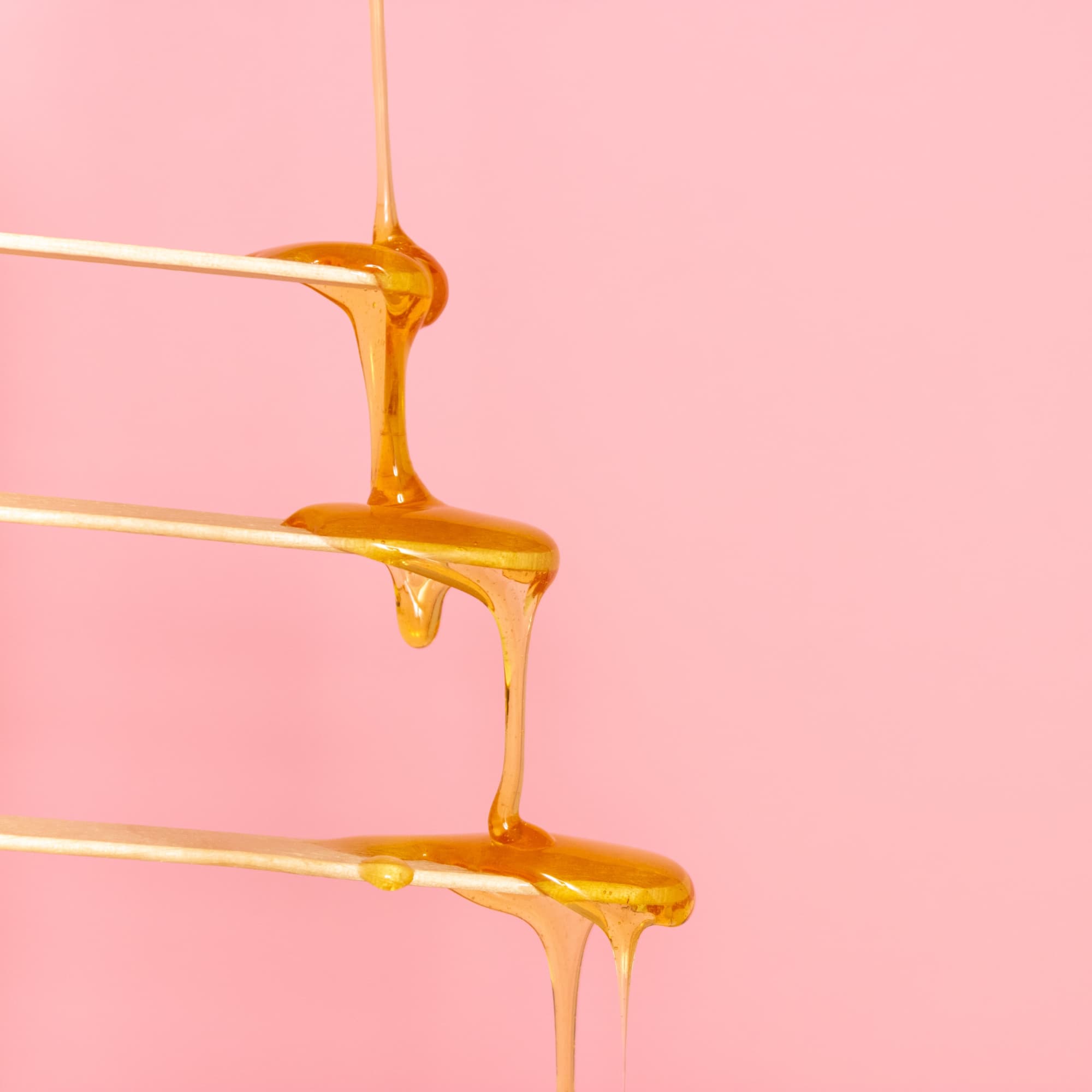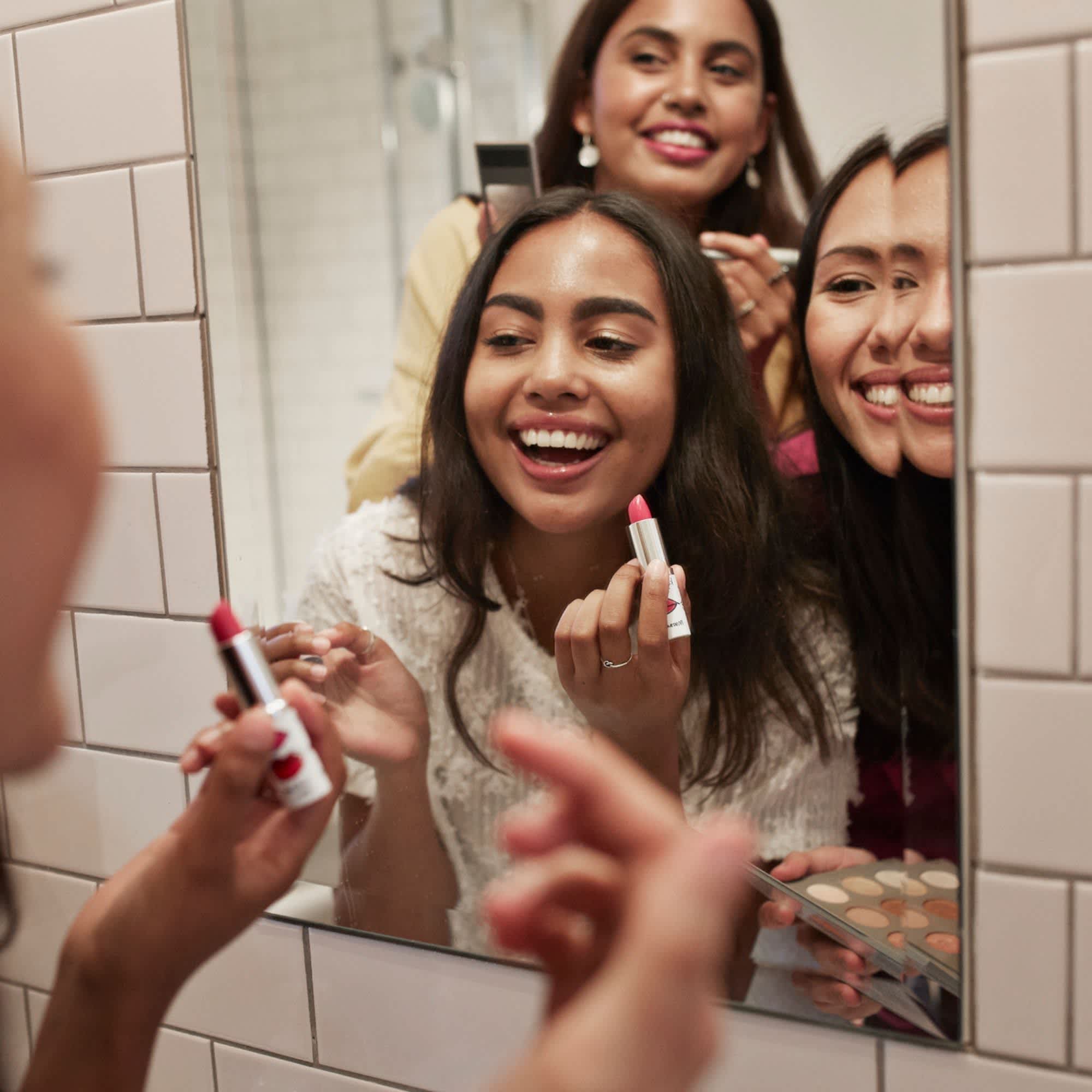
- POPSUGAR Australia
- Beauty
- What’s the Difference Between Sugaring and Waxing? Here’s What You Need to Know
What’s the Difference Between Sugaring and Waxing? Here’s What You Need to Know

There are plenty of different routes you can take when it comes to hair removal. Shaving is a good option if you want something relatively quick and painless; laser hair removal is worth considering if you want to see a decrease in your overall hair growth over time. Then there are the in-between treatments like sugaring and waxing, which – even though they’re not exactly – being painless, are fairly common options.
Sugaring and waxing are very similar in that they both involve the use of a sticky mixture meant to remove the hair from the root so that it grows back slower and thinner than it would if you shaved it off, but there are actually a handful of things that make them different from one another, too. For starters, sugaring employs an all-natural sugaring wax made with sugar, water, and lemon juice that’s typically applied at room temperature, while waxing requires the use of hot wax – but that’s just the tip of the iceberg.
To get the details on the major differences between sugaring and waxing – and who’s a good candidate for both – we spoke to two hair removal experts. Read ahead to see their thoughts.
What Is Sugaring?
Sugaring is an all-natural alternative to waxing that requires the use of a sugar paste made with lemon, water, and sugar. It usually involves an aesthetician rolling a lump of the sugaring paste onto the skin and removing the hair follicles from the root using a flicking motion.
What Is Waxing?
Waxing also involves removing the hair from the root, but it’s known for being a little faster than sugaring because you can apply it in strips on multiple parts of the area being waxed at once. This can typically be done using a hard wax or a soft wax; a hard wax hardens after being applied to the skin and can be removed using just your fingers once it sets, while a soft wax is thinner and requires the use of large paper strips to be removed.
What Are the Major Differences Between Sugaring and Waxing?
Aside from their ingredient makeups, waxing and sugaring are performed using two separate techniques. “The sugaring technique removes hair in the direction of hair growth, which is the opposite of waxing,” Salome Sallehy, founder of Sugar Sugar Wax, told POPSUGAR. According to Sallehy, removing the hair this way results in less breakage of the hair, meaning there’s a better chance you won’t experience ingrown hairs or stubble after sugaring, and your results can last you anywhere from six to eight weeks.
Alternatively, waxing removes the hair against the direction of growth. “With waxing, hair is removed from the root so eventually when the hair does grow back it will be softer, and finer,” Gina Patek, education manager at European Wax Center, said. “The benefits are that it provides long lasting results.” Usually the results of waxing can last around three to four weeks.
Sugar paste is also more solid than wax, and in most cases, one lump can be used to remove hair from an entire area of the body or at least until it’s no longer able to pick up hair. “A lot of brands label cold wax as sugar wax, and it’s really important to understand that not all sugar waxes are made equal,” Sallehy said. “The key indicator is whether you’ll need strips to remove the wax. If you have to use strips, then it’s not the sugaring method which is applied by hand and reused.”
Which One Is the Least Painful?
Pain is relative depending on each individual’s tolerance, but many people have claimed that sugaring is slightly less painful than waxing.
“Sugaring wax has a very unique property; it strictly grabs dead skin cells, which is what hair is made up of as well,” Sallehy said. “When you’re pulling sugar wax, you’re only pulling on the dead skin, not live skin, which is why you barely feel it at all.”
Still, that’s not to say that any hair removal method that involves removing the hair from the root will ever be completely pain-free. “If you’re removing virgin hair, which are the follicles that you were born with that have never been removed, it doesn’t matter what method you use, it’s going to hurt,” Sallehy said. “That pain doesn’t come from the skin but rather from the nerve endings attached to the root of the hair.”
Between Sugaring and Waxing, Which Method Should I Choose?
The method you choose ultimately depends on the results you’re looking for. Sugaring paste is biodegradable and can be dissolved with warm water, meaning that if you’re looking for a more eco-friendly option that doesn’t produce as much waste, this is a good one to consider. Sugaring is also a more comfortable alternative for people who may have sensitive skin, and it decreases the likelihood of you coming across any ingrown hairs once the hair begins to grow back.
Waxing on the other hand is a good option to consider if you still want the same smooth, long-lasting results done in a shorter amount of time. As a bonus, it’s known to be cheaper, but that might depend on where you’re getting it done. “In salons, waxing services tend to be less expensive than sugaring services because sugaring takes a bit more time,” Sallehy said.
How one hair removal method ranks in comparison to all the others ultimately depends on your personal needs, but hopefully this has been a helpful guide for anyone just getting a start on their hair removal journey.


